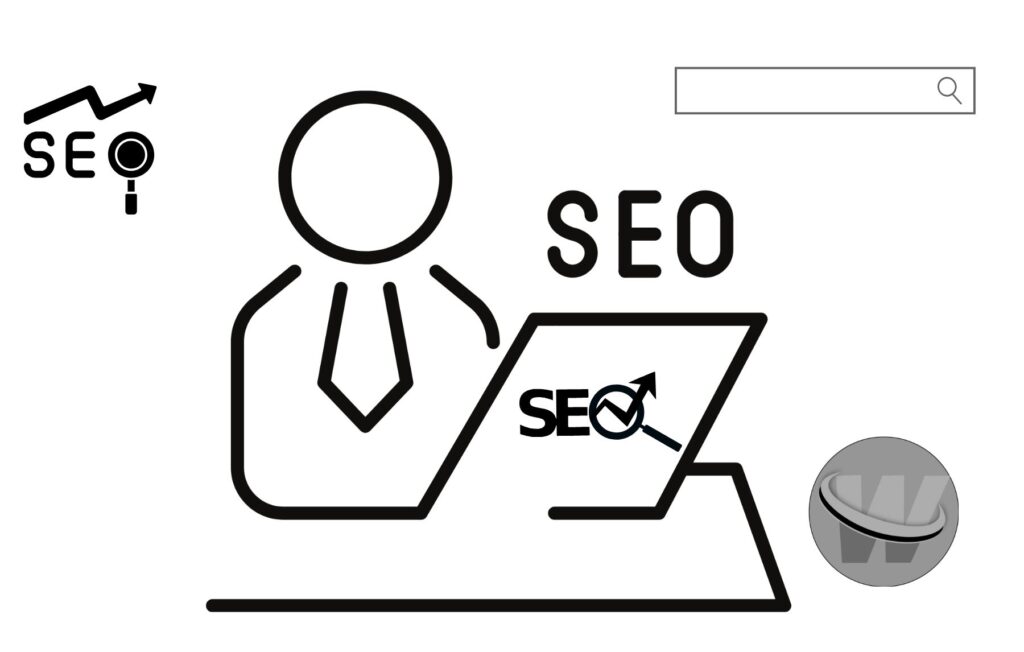Step-by-Step Guide to Start with SEO
Step-by-Step Guide to Start with SEO What is SEO? Search Engine Optimization (SEO) is the process/method of improving your website’s visibility on search engines (like Google) to appear higher in search results when users look for specific keywords. SEO is a long-term strategy but is highly effective for building credibility and consistent traffic. When your website ranks good on search engines, it attracts organic traffic (visitors without paid ads). SEO is a long-term strategy but is highly effective for building credibility and consistent traffic. How SEO Works Algorithms are used by search engines to rank websites based on several factors. Relevance: Does your content match the user’s search intent? Quality: Is your content high-quality, engaging, and trustworthy? Technical Aspects: Does your website load fast, and is it mobile-friendly? Types of SEO On-Page SEO: Optimizing the structure and contents of your website. Off-Page SEO: Building authority through backlinks from other websites. Technical SEO: Ensuring your website is technically optimized (speed, mobile-friendliness, etc.). Step-by-Step Guide to Start with SEO Here’s how you can learn and implement SEO: Step 1: Understand Keywords A keyword is a phrase that people type into a search engine to find information. For example: If someone searches “best shoes for running,” “best shoes for running” is a keyword. How to Find Keywords: Try using free tools like Google Keyword Planner, Ubersuggest, or AnswerThePublic. Look for keywords with: High search volume (lots of people searching). Low competition (easier to rank). Step 2: Create High-Quality Content Once you have keywords, create content around them. Content Creation Tips: Title: Include the keyword in your title (e.g., “10 Best Running Shoes in 2024”). Headings: Use keywords in subheadings (H1, H2 tags). Body: Naturally include the keyword throughout your text, but avoid stuffing it. Solve problems or answer questions with your content. Step 3: Optimize On-Page SEO On-page SEO focuses on your website’s content and structure. Key On-Page SEO Elements: Title Tags: Use a compelling title that includes your keyword. Meta Description: Write a short summary (160 characters) with your keyword. URLs: Keep URLs short and keyword-rich (e.g., www.example.com/best-shoes). Internal Linking: Include links to your website’s other pages. Image Optimization: Compress images to improve load speed. Add “alt text” using keywords for better accessibility. Step 4: Build Backlinks (Off-Page SEO) Backlinks are links from other websites to yours. You can use them to signal to search engines that your site is trustworthy. How to Get Backlinks: Write guest posts for other blogs. Use social media or forums to share your content. Reach out to websites and suggest linking to your valuable content. Step 5: Focus on Technical SEO Technical SEO ensures your site performs well technically. Checklist: Mobile-Friendly: Your site should look good and work well on mobile devices. Speed: Use tools like Google PageSpeed Insights to check and improve your website speed. Sitemap: Submit your sitemap to Google through Google Search Console. HTTPS: Use SSL certificates for a secure website (https://). Step 6: Track and Improve SEO is ongoing. Use tools to monitor your progress: Google Analytics: See how much traffic your site gets. Google Search Console: Check which keywords bring traffic. SEMrush or Ahrefs: Analyze your competitors and improve your strategy. Simple SEO Workflow Research: Use a tool to find 5 low-competition keywords. Write Content: Create a blog post targeting each keyword. Optimize: Add keywords to your title, headings, and meta descriptions. Promote: Share your blog on social media and ask for backlinks. Track: Use Google Analytics to see how your content performs. Example SEO Scenario Suppose you create a blog post: “Top 10 Mobile Apps for Fitness in 2024” Keyword: “Best fitness apps 2024” Title: “10 Best Fitness Apps in 2024 for Health Enthusiasts” Content: List the apps. Include tips for using each app. Make it engaging by adding images and videos. Promotion: Share it on Facebook and Instagram. Ask fitness bloggers to link to your post. Expected Results SEO takes 3–6 months to show significant results. A well-optimized blog can bring consistent traffic, leading to ad revenue or affiliate income.
